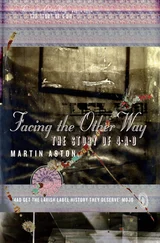William Aston - Shinto
Здесь есть возможность читать онлайн «William Aston - Shinto» — ознакомительный отрывок электронной книги совершенно бесплатно, а после прочтения отрывка купить полную версию. В некоторых случаях можно слушать аудио, скачать через торрент в формате fb2 и присутствует краткое содержание. Жанр: foreign_antique, foreign_prose, на английском языке. Описание произведения, (предисловие) а так же отзывы посетителей доступны на портале библиотеки ЛибКат.
- Название:Shinto
- Автор:
- Жанр:
- Год:неизвестен
- ISBN:нет данных
- Рейтинг книги:5 / 5. Голосов: 1
-
Избранное:Добавить в избранное
- Отзывы:
-
Ваша оценка:
- 100
- 1
- 2
- 3
- 4
- 5
Shinto: краткое содержание, описание и аннотация
Предлагаем к чтению аннотацию, описание, краткое содержание или предисловие (зависит от того, что написал сам автор книги «Shinto»). Если вы не нашли необходимую информацию о книге — напишите в комментариях, мы постараемся отыскать её.
Shinto — читать онлайн ознакомительный отрывок
Ниже представлен текст книги, разбитый по страницам. Система сохранения места последней прочитанной страницы, позволяет с удобством читать онлайн бесплатно книгу «Shinto», без необходимости каждый раз заново искать на чём Вы остановились. Поставьте закладку, и сможете в любой момент перейти на страницу, на которой закончили чтение.
Интервал:
Закладка:
A second exception is the case of conscious make-believe, of which we may observe instances in the play of children, and even of the lower animals. Errors and fancies of this kind do not constitute religion, though they may prepare the way for it. A time comes, however, when some savage or primitive man, gifted beyond his fellows, arrives at a partial and hesitating recognition of the truth that with the energies of nature there really goes something of the same kind that he is conscious of in himself, and has learned to recognize in his fellow beings-namely, sense and will. He sees the sun move across the heavens, diffusing light and warmth, and says to himself, "He is alive." With the intellectual perception there is associated emotion. He feels that the sun is kind to him, and bows his head as he would to his chief, partly to express his thanks and partly in order that others may share his thoughts and feelings. This is religion. It comprises the three elements of thought, emotion, and action. Religion is at first exceptional. Every primitive man is not a seer or maker of religious myth. His ordinary attitude towards the powers of nature is that of the Chinaman, who thought that the moon was "all the same lamp pigeon." He is an unconscious Agnostic, and knows nothing of volition in the inanimate world.
The deification of men, although involving a contradiction in terms, has yet a substantial and most important truth associated with it. Great captains, wise rulers, inspired poets, sages and seers, whether alive or dead, deserve honour to which it is not easy to place a limit. Napoleon said that one of his generals was worth an army division. Who shall estimate the value to their respective races, and, indeed, to humanity, of such men as Shakespeare, Confucius, Mahomet, or Buddha? Nor are they dead. They live in their works, and subjectively in the hearts and minds of their countrymen. And may we not go a step further? Our actions, even the most insignificant, do not remain locked up in ourselves. As by sensation the whole universe affects us, so does every impulse of our ego react upon the universe, leaving an impression which is indelible. The physical world is different for the most trifling act of the meanest human being that ever lived. All our emotions and thoughts have a counterpart in our physical constitution, which is resolvable into motion, and is therefore indestructible. The doctrine of the conservation of energy is the physical counterpart of the doctrine of the immortality of the soul. Each involves the other. Assuming, therefore, that all motion is accompanied by something akin to sensation, it will be seen that dead men may continue to have perhaps even a sentient existence equal to the sum of the reactions of their ego upon its environment, animate or inanimate, during life. It is the remembered total energies of the man which, I take it, form the object of honour and worship after he is dead, and not his corpse or ghost. The latter is a mere accident, of secondary origin, and is by no means universally recognized.
In justification of man-worship, it may also be pleaded that if the nature-deity is truer, the man-deity is nearer to us and more capable of vivid realization. And as it is from the sympathetic recognition of life in our fellow men that we proceed to the recognition of life in the so-called inanimate universe, so it is by the contemplation of the highest types of humanity that we are able to refine and exalt our conception of divinity.
The two great sources of religious thought, personification and deification, are constantly intermingling their streams and reacting upon each other. A deity who begins his career as a Nature-God often in course of time loses this quality, and becomes hardly distinguishable from a magnified man. The Zeus of Homer is an example. He is much more the Father of Gods and men than a Sky or Weather-God. In Japan it is only the scholar who recognizes in Susa no wo the deity of the Rain-storm. To the people even Tenshōdaijin (the Sun Goddess) is nothing more than the great providential deity who resides at Ise. Her solar quality is practically forgotten. Men, on the other hand, may be exalted to such a height by the ascription to them of nature-powers that their original humanity is much obscured.
It is sometimes difficult to determine to which of the two currents of religious thought a particular deity belongs. For example, we find a sword worshipped as a deity. Is it on account of its wonderful cutting property, or because it was once an offering to a nature or a man-deity, and had therefore at length absorbed to itself a portion of his divinity? Or is it the Excalibur of some forgotten deified chieftain? There is no general answer to such questions. They must be decided, if at all, by the evidence in each case. To call objects of this kind "fetishes" helps us nothing. In the Yengishiki we find mention of a shrine to Iha no hime (the lady of the rock). At first sight this looks like a Nature-God. But when we find that an Iha no hime was the mother of the Mikado Richiu (end of fourth century) it seems more probable that the Iha no hime of this shrine was a deified mortal.
In Shinto it is the first of the two great currents of religious thought with which we are chiefly concerned. It is based much more on the conception-fragmentary, shallow, and imperfect as it is-of the universe as sentient than on the recognition of pre-eminent qualities in human beings, alive or dead. It springs primarily from gratitude to-and, though in a less degree, fear of-the great natural powers on which our existence depends. The desire to commemorate the virtues and services of great men and to perpetuate a loving remembrance of departed parents and forefathers takes a secondary place.
Classification of Deities. – Both Nature-Gods and Man-Gods may be deities of individuals, of classes, or of abstract qualities. We have, therefore, six classes of Gods, as follows: -
Individuals, as the Sun.
Classes, as the God of Trees.
Properties, as the God of Growth.
Individuals, as Temmangu.
Classes, as Koyane.
Properties, as Ta-jikara no wo (Hand-strength-male).
This is the logical sequence; but it by no means follows that all Gods of individuals precede all Gods of classes, or that there were no deities of abstractions before some of the later individual or class deities were evolved.
The distinction between individual objects deified and deities of classes is not always well maintained in Shinto. It is doubtful, for example, whether Kamado no Kami is the God of all cooking furnaces, or whether there is a separate God for each. Different worshippers might give different answers. The habitual neglect by the Japanese nation of the grammatical distinction between singular and plural is a potent obstacle to clearness in such matters.
Phases of Conception. – The conception of individual parts of the universe as deities passes through the phases represented in the following formulas: -
I. The Sun (Moon, Wind, Sea, &c.) is alive.
II. The Sun is a man, a father, a chief or a king-first rhetorically, and then literally.
III. The Sun is a material object, ruled by an unseen but not incorporeal being with human form and passions.
IV. The Sun is ( a ) a material object ruled by an anthropomorphic being which has a spiritual double, or ( b )is animated by a spiritual being.
These formulas exhibit the logical sequence of development. In practice the various phases are found to overlap one another considerably. Even in the latest Shinto the direct conception of the natural object as alive is not forgotten.
The first stage, 6in which we have the religious conception before it is clothed in myth or metaphor, is abundantly exemplified in Shinto. A well, for example, is, like Horace's "Fons Bandusiæ," worshipped without name or myth attached to it, or anything to show whether it is regarded as male or female. The same is the case with sites, buildings, provinces, trees, all of which are deified and have religious rites in their honour without any very definite personality being attributed to them. They are simply thought of as in some sort of way living things. Mud and sand are dubbed Kami , and there the personification ends. There are a good many colourless deities of this kind in Shinto. Motoöri declares explicitly that when a sea or a mountain is called Kami , it is not the spirit of the sea or mountain which is meant, but the sea or mountain itself. A poet of the Manyoshiu says of Fujiyama: -
Читать дальшеИнтервал:
Закладка:
Похожие книги на «Shinto»
Представляем Вашему вниманию похожие книги на «Shinto» списком для выбора. Мы отобрали схожую по названию и смыслу литературу в надежде предоставить читателям больше вариантов отыскать новые, интересные, ещё непрочитанные произведения.
Обсуждение, отзывы о книге «Shinto» и просто собственные мнения читателей. Оставьте ваши комментарии, напишите, что Вы думаете о произведении, его смысле или главных героях. Укажите что конкретно понравилось, а что нет, и почему Вы так считаете.












